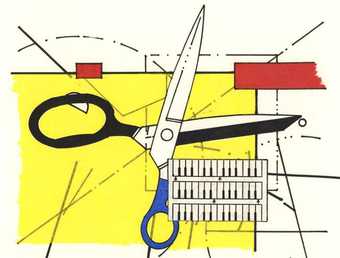While structural film was the dominant form within the avant-garde tradition at the dawn of the 1970s, animators used shape and structure in a variety of ways that differentiated their works. Robert Russett composed geometric patterns and colour sequences in complex rhythms to create his pulsing, abstract films. Paul Glabicki created incisive, analytical works that explored objects through image, language, form and movement, drafting stunningly complicated sequences by hand. Barry Spinello’s films are also hand-drawn but more impressionistic, with blobs of colour flashing by to the rhythm of a primitive, handmade optical soundtrack. With Saugus Series, Pat O’Neill created several chapters of complex, layered imagery that was ‘animated’ through physical processes of composition such as optical printing, hand-drawn shapes and composites.
Please note that this programme contains stroboscopic images.
Programme
Bruce Conner, Ten Second Film, USA 1966, 16mm, black and white, silent, 1 min
Print courtesy the Conner Family Trust and Kohn Gallery, © Conner Family Trust
Peter Rose, Incantation, USA 1970, 16mm, colour, sound, 8 min
Print preserved by the Academy Film Archive, courtesy the artist
Paul Glabicki, Object Conversation, USA 1985, 16mm, colour, sound, 10 min
Print courtesy Canyon Cinema
Robert Russett, Primary Stimulus, USA 1980, 16mm, colour, sound, 8 min
Print preserved by the Academy Film Archive
Paul Glabicki, Diagram Film, USA 1978, 16mm, colour, sound, 14 min
Print courtesy Canyon Cinema
Robert Russett, Neuron, USA 1972, 16mm, colour, sound, 7 min
Print presered by the Academy Film Archive
Barry Spinello, Colored Relations, USA 1970, 16mm, colour, sound, 5 min
Print courtesy Canyon Cinema
Pat O’Neill, Saugus Series, USA 1974, 16mm, colour, sound, 18 min
Print courtesy Canyon Cinema

